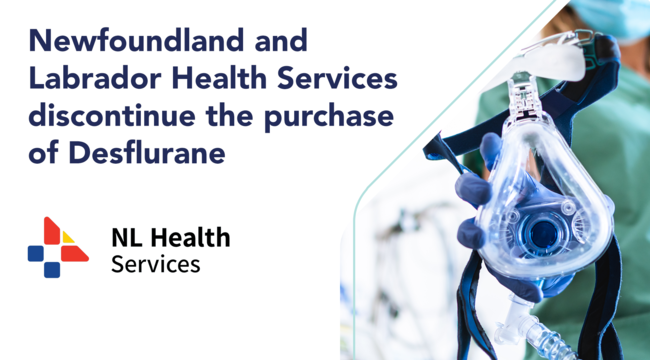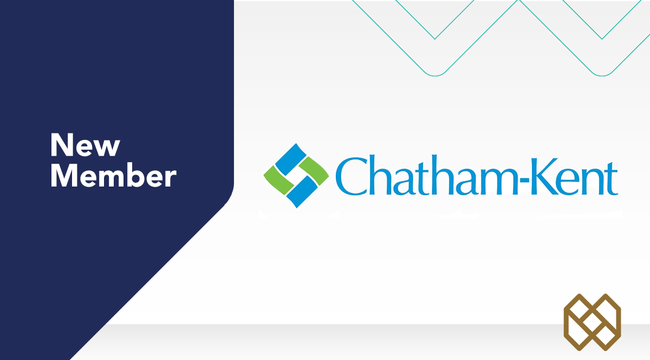HealthPRO Canada News
September 16, 2021
Collaborating for results: How working together kept our drug shortage in check during the pandemic

At the Ontario Hospital Pharmacy Management Seminar (OHPMS), a panel discussed Drug Supply Integrity in Times of Drug Shortages. Clockwise from top left: David Schachow, Director, Drug Programs Delivery Branch; HealthPRO’s Vice President, Pharmacy Christine Donaldson; Kiran Chandra, Senior Program Analyst, Vendor and Service Delivery Relations Unit; Jin‐hyeun Huh, Senior Director of Pharmacy Operations at Toronto General Hospital; and Angie Wong, Director, Drug Programs Policy and Strategy Branch.
Near the beginning of the pandemic, when alarm bells in the healthcare sector were still a faint murmur, Jin‐hyeun Huh was asked a question he didn’t know how to answer. “How is Ontario doing?” “That’s when I realized,” says the Senior Director of Pharmacy Operations at University Health Network, “that we just didn’t have the structures and the linkages in place to cope with this easily.”
No matter how close organizations and hospitals were to the crisis, more than 14 months in, none is sheepish about admitting they weren’t ready.
There was a lot that was new coming at us during the pandemic, but drug shortages wasn’t one of them. “We had been managing backorders with drug shortages for years,” said Jin. “What was different during the pandemic was the increased demand. It wasn’t a shortage per se but demand was clearly outpacing supply.”
While the crisis is far from over in Canada, close observers say it’s not too soon to consider how we can be better prepared for the next pandemic. At the CSHP Ontario Branch’s Ontario Hospital Pharmacy Management Seminar (OHPMS) in early May, a panel discussed Drug Supply Integrity in Times of Drug Shortages. Jin was joined by HealthPRO’s Vice President, Pharmacy Christine Donaldson; Angie Wong, Director, Drug Programs Policy and Strategy Branch; David Schachow, Director, Drug Programs Delivery Branch; and Kiran Chandra, Senior Program Analyst, Vendor and Service Delivery Relations Unit.
Before responding to questions from the audience, panelists shared their lessons learned, what’s working well, and what needs to change.
What we learned:
1 - Collaboration is key.
In a year where everything was unprecedented, Christine said the best way to describe how far we’ve come in such a short period of time is collaboration. “Here we were in Ontario, saying ‘What’s our current state, what do we need?’ That was challenging enough. But at the federal level, they were saying, ‘What does Canada need?’” she says.
Fear and hesitancy were soon overtaken by healthcare’s natural instinct – when a patient needs your help, everybody pitches in and makes it happen. “Everyone really stepped up,” says Christine, “The teams at the Ministry of Health, Health Canada, hospital pharmacy teams, hospital leadership, and supply chain experts were all key stakeholders working together with the GPOs. Coming together allowed us to build the critical drug list and also helped to forecast that national picture.”
Moving information around a big province like Ontario is always difficult. But that changed dramatically during the pandemic. “Information requests were turned around much faster,” says Jin, “because everybody was invested in really making a much more robust system.”
As the teams started to see things coming together, even in the midst of all the uncertainty, there was renewed confidence in the system. “Everybody had each other's backs, and when someone was in trouble, we were there to lift them up and get them out,” says Jin.
2 - Leverage your connections
HealthPRO has the supplier connections and moved quickly to use them. “We really leveraged all our relationships and all of our strengths,” says Christine. “We were emailing, contacting, thinking, how can we tap into our supplier network to find out if there was any capacity in their global systems to bring in more.”
“We were doing things that at one time would have seemed pretty radical, but we were being strategic. We knew we needed a different approach to serve the greater good.”
The forecasts to suppliers might have been a little overzealous at the time but they were being fed by much higher burn rates – hospitals were predicting they would go through a year’s worth of ICU drug inventory in three to four months. “We were seeing 5-10 times the normal doses being needed for COVID patients in the ICU,” said Christine. HealthPRO’s suppliers were suddenly on the hook, but our forecast to suppliers protected the supply Canada needed so it didn’t get exported to other jurisdictions.
3 - Time to bolster our supply chain
Among other things, the pandemic exposed the vulnerability of our supply chain. “We need to bolster the supply chain at all levels,” says Christine. “At the hospital, at the distributor level, and at the supplier level. The supply chain has been stretched beyond belief and it was vulnerable, right from the get-go.”
Radical changes are needed but the panel agreed, they won’t happen overnight. “Even if we decide today that we need to increase demand on an injectable drug, it will still take three to four months to actually see that increased volume,” says Christine. “These are things we need to be thinking about ahead of the next surge.”
A valuable tool: Christine praised the value of having a fulsome Ontario dashboard, a joint initiative driven by some of our member healthcare facilities and the Ministry of Health. “It gives a picture of what is needed and what's available against the patient demand,” she said. “We've seen that replicated across different provinces and I think that's really going to serve us well.”
The panel then turned to questions from the audience.
Are there any discussions on having more real-time inventory insight across all hospitals?
Christine: I believe that's already in place in Quebec. They do have a mandatory level, a minimum quantity on hand that has to be executed in every single site. It’s part of a governmental agreement that's in place. The government initiates the purchase order and then every hospital has to line up to make sure they integrate that supply.
I'm not sure how successful they've been in avoiding backorders. It would be interesting to test that model. That's the one province where it does exist today.
How do you see the COVID procurement experience changing the way we approach contracting and procurement in the future?
Angie: One of the things we recognized with the pandemic is how all the hospitals and the provinces have collaborated. Working together was probably not as deliberate or done as early as it could have been and that’s something we have to continue to do. When supply comes in, how do we ensure that what is available gets to the patients who need it?
Having the market take its course may not always lead to the best equitable approach for drug distribution. We've seen waves of COVID hitting the provinces at different points in time and folks needing products at different points in time. If it weren't for the collaboration between the provinces, patients across the country would not have had the drugs they needed.
Christine: We are definitely working to self-insure ourselves a bit better for the future. We were just on a call today talking about the next 4-6 months and what that's going to look like. So you heard me talk about a critical drugs list – that has now been embedded into some of our contract language and suppliers are well aware. And quite honestly it helps them too, because they need to be better prepared to respond to unanticipated increases in demand.
HealthPRO’s strategy of having split awards allows us to keep two healthy vendors in the marketplace whenever possible. So you never choose to sole source a critical drug or limit diversity of supply. The second thing is having greater supply in the system. Our contracts now require a mandatory 90 days of supply of critical drugs.
Do you believe that having 90 days on hand is enough?
Christine: We saw that 60 days was not quite enough, so decided to add another month's supply into our contracts. I would say, though, it's the responsibility of everyone who’s part of the supply chain to try to be better prepared. We are seeing hospitals, for select products and molecules, deciding to keep more on hand. And I think that's now being supported by their executive teams because they know what it means to not have enough product.
The pandemic has really brought to light the fragility of our supply chain. We all knew there were gaps but the healthcare supply chain has taken on a whole flavour since everyone's been under the microscope. So I predict there's going to be a very different approach to pandemic planning and to inventory processes overall.
Jin: I'll add here that we know the vendor community needs time to be able to generate more product and that has to be taken into account. 30 days is unrealistic. There's no company that can turn around and produce more products in 30 days.
Most companies throughout COVID have been very upfront about what their manufacturing times are, what their QA times are, how quickly they can move their product lines. And that doesn't happen very quickly. It requires planning, not just from raw products, but getting the vials, getting the diluents, everything in place, to be able to do it. We have to be open to understanding if they tell us it can be done in 90 days, great.
This needs to go into the contract as well, not just because it’s a nice round number but because it tells us how long they need to actually produce product.
When will there be a provincial strategy to manage the drug shortages?
Jin: Hopefully it won't take us another pandemic to realize this is important. But I think we do have to understand the process, what it takes and what it means to be sustainable. Kudos to all the pharmacy directors and managers out there who have been supporting the drug dashboard for the last year or more to make sure we understood what was happening and where the drugs were.
It's not just about how much you bring in, but how are you using it? And are you using it appropriately? We need to think about what we want on a dashboard. Numbers and graphs always look great, but it actually needs to prompt you to do something, right? I think there is value in maintaining some sort of dashboard.
Christine: I was just going to add that our suppliers are also now more informed as to when we want to tap them on the shoulder to become an alternate. Many of our contracts are now identifying that so when we have a shortage from our usual supplier, they're our first go-to. It might be a slightly different format, we may have to put other products on protective allocation, but it's all about having quick access to the information so we can work with the supplier community to step up where and when they need to.


